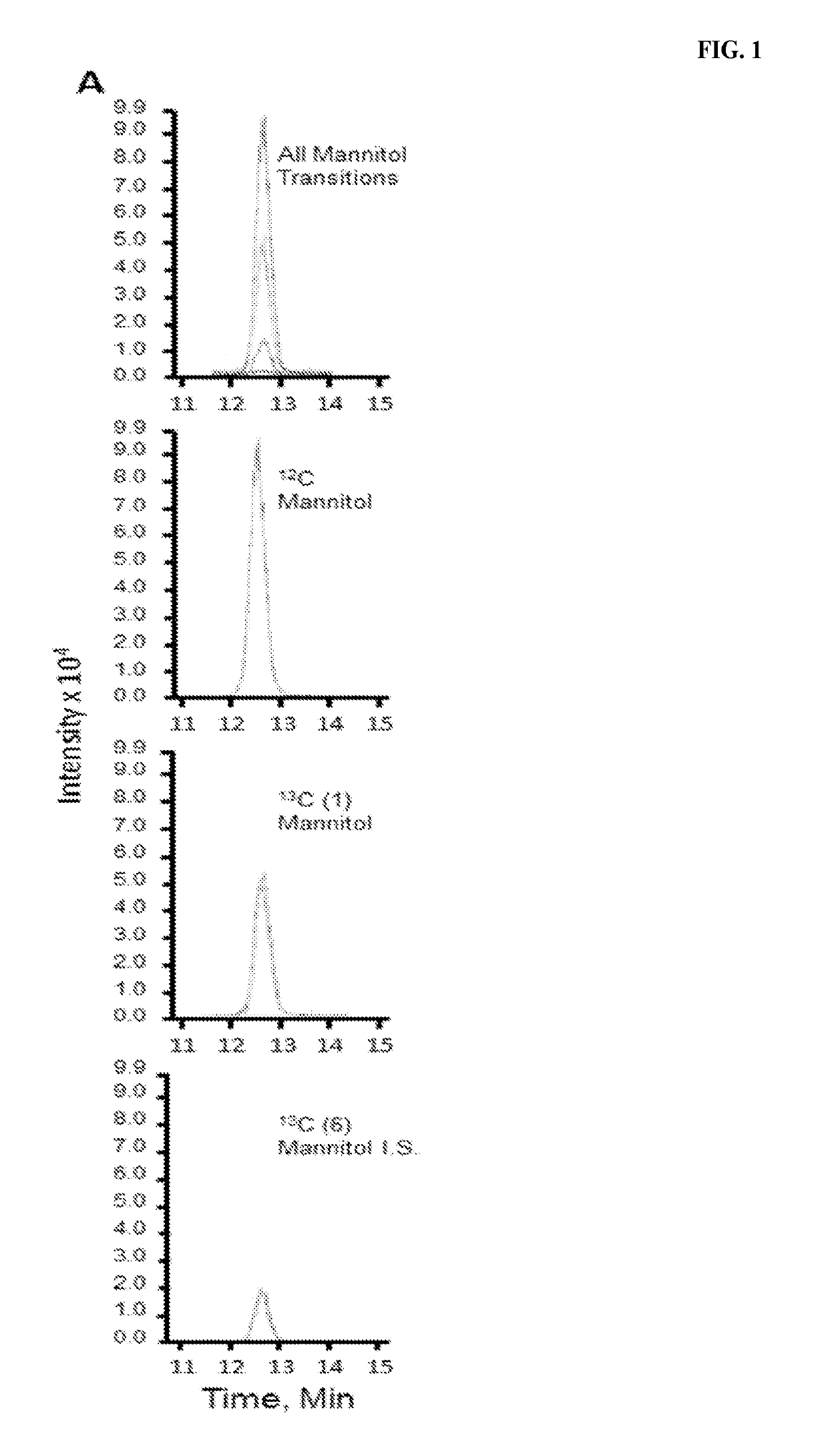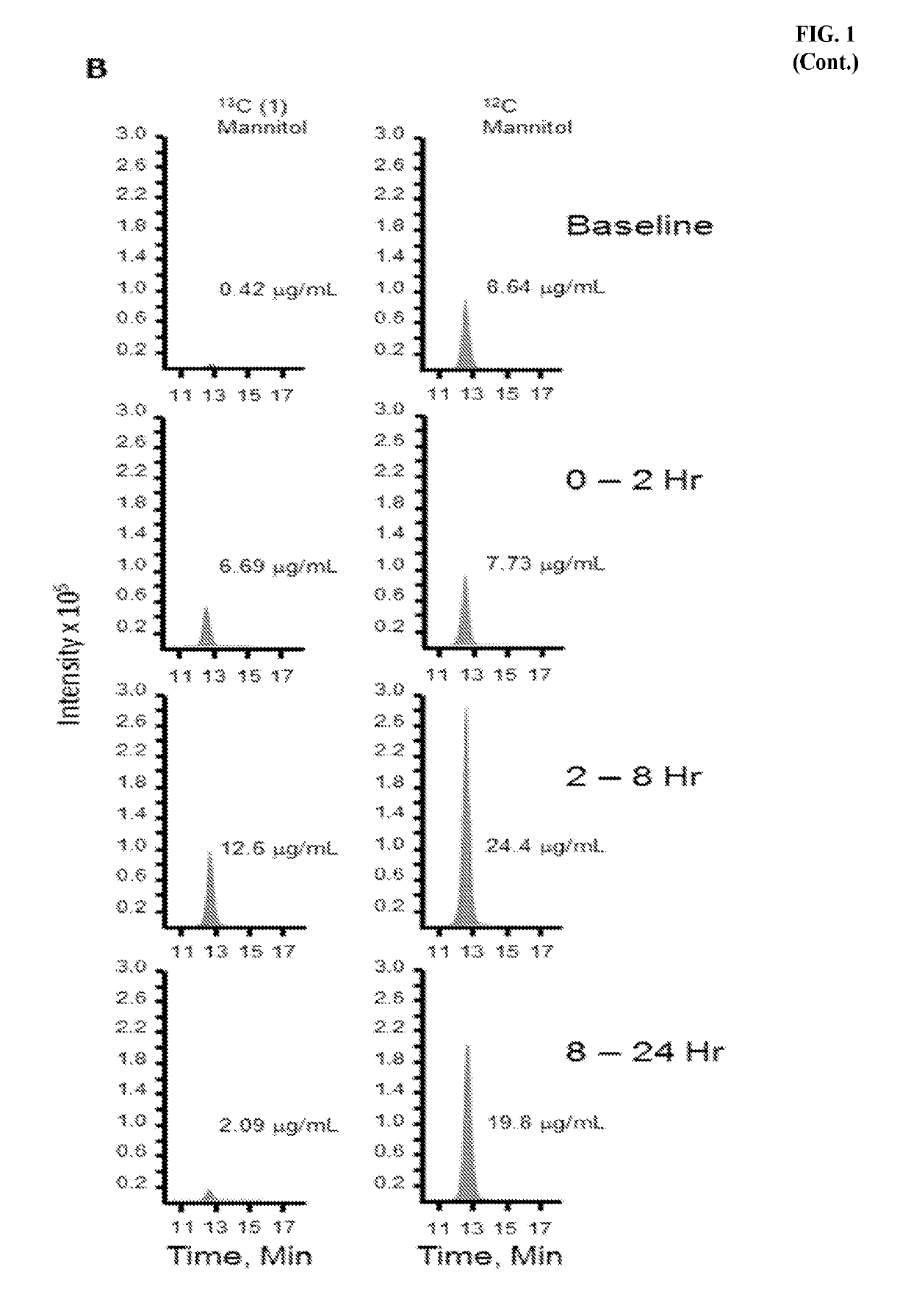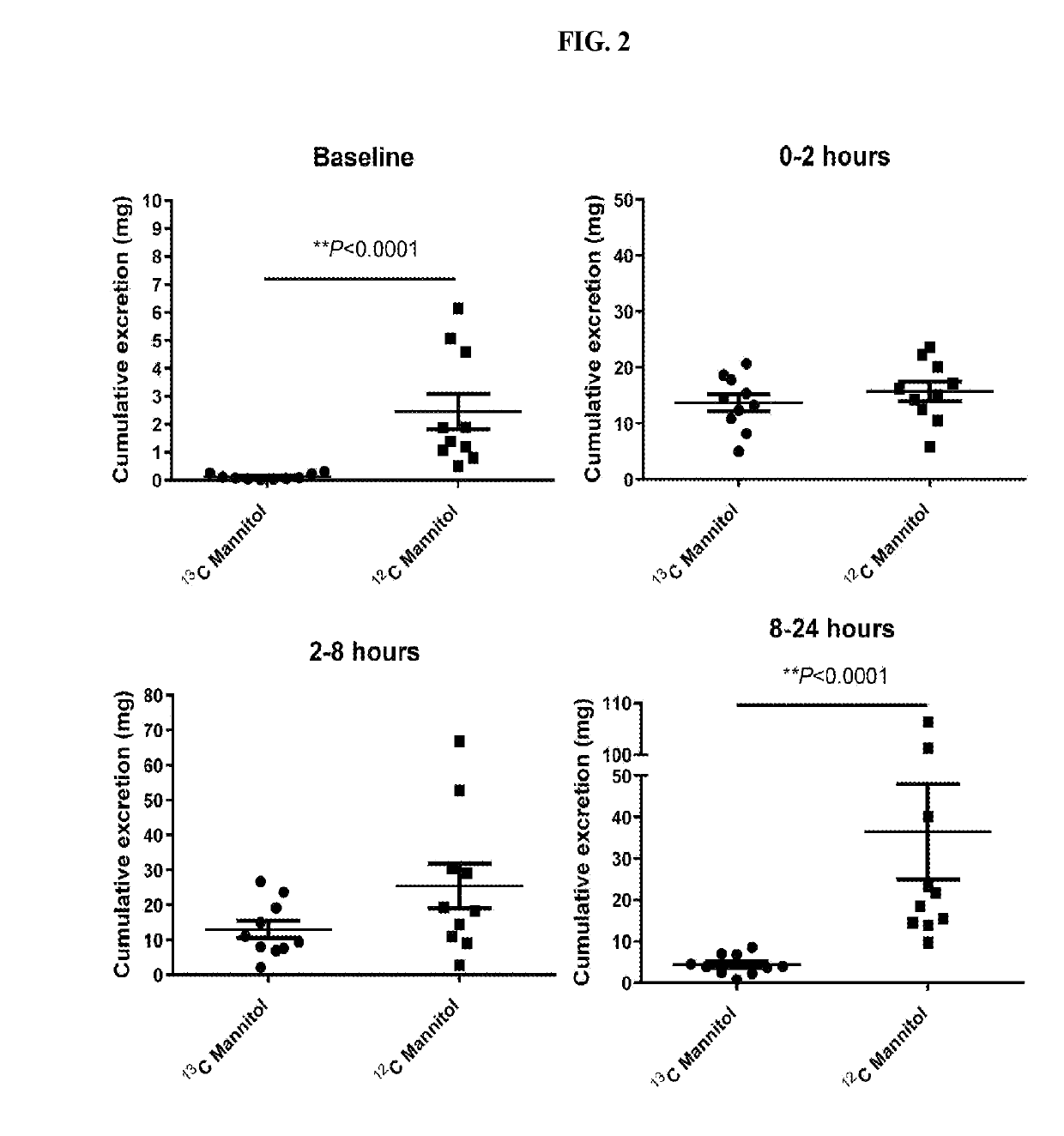Methods and materials for assessing intestinal permeability
a technology of intestinal permeability and methods, applied in the field of methods and materials involved in assessing intestinal permeability of mammals, can solve problems such as errors in tests, and achieve the effect of increasing confidence in subsequently measured levels and starting levels
- Summary
- Abstract
- Description
- Claims
- Application Information
AI Technical Summary
Benefits of technology
Problems solved by technology
Method used
Image
Examples
example 1
Using 13C-Mannitol In Vivo to Assess Intestinal Permeability
[0018]The following was performed to determine if administration of 13C-mannitol can be used to measure intestinal permeability. Ten healthy volunteers (five females) received oral sugars after 8 hours of fasting. Those volunteers using tobacco, NSAIDs, oral corticosteroids, sweeteners, lactulose, mannitol, or medications affecting gastrointestinal transit were excluded. Three saccharides (100 mg of 13C-mannitol, 100 mg of 12C-mannitol (regular mannitol), and 1000 mg of 12C-lactulose (regular lactulose)) dissolved in 250 mL of water were administered. 0-2 hour cumulative mannitol and 8-24 hour cumulative lactulose or mannitol excretion were measured to assess small intestinal and colonic permeability, respectively. After baseline urine collection, collections were pooled for 0-2 hours, 2-8 hours, and 8-24 hours following administration of test sugars. High performance liquid chromatography-tandem mass spectrometry was perfo...
example 2
Using 13C-Mannitol In Vivo Test to Determine Response to Treatment in Irritable Bowel Syndrome (IBS)
[0023]IBS-diarrhea (IBS-D) is associated with low grade inflammation, increased mucosal expression of secretory mechanisms, and disorders of epithelial barrier function.
[0024]The following was performed to evaluate safety and effectiveness of oral nutritional therapy with serum-derived bovine immunoglobulin (SBI) on symptoms, epithelial barrier function, and mucosal expression of pivotal genes in small intestinal mucosa (SI) in patients with IBS-D. This open-label pilot study evaluated effects of SBI, 5.0 g twice daily for 8 weeks, in 15 patients with IBS-D (Rome III) on symptoms, tryptophan metabolism (kynurenine to tryptophan ratio), intestinal permeability [measured by two sugars (13C-mannitol and lactulose) urine excretion: 0-2 hours (SI) and 2-8 hours (SI and colon)] and distal duodenal mucosal mRNA expression of pivotal genes including tight junction, secretory mechanisms, tissu...
example 3
Using 13C-Mannitol In Vivo Test to Determine Differences in Permeability Between IBS and Healthy Humans
[0028]Duodenal and colonic mucosal barrier function and bacterial translocation in females with constipation predominant IBS were assessed. A subset of patients with diarrhea predominant IBS have increased intestinal permeability. Mucosal barrier function has not been comprehensively studied in constipation predominant IBS (IBS-C).
[0029]The following was performed to determine duodenal and colonic barrier function and endotoxin activity in females with IBS-C in comparison to healthy. 16 IBS-C (Rome III) patients and 13 matched healthy volunteers (females) were given oral lactulose, 12C mannitol and 13C mannitol measured cumulatively over 0-2 and 8-24 hours by HPLC-MS. 10 biopsies were obtained from duodenum and sigmoid colon. Mucosal transepithelial resistance (TER), FITC dextran (4 KDa), and E. coli K12 BioParticle flux were measured in Ussing chambers. Endotoxin activity (blood) ...
PUM
| Property | Measurement | Unit |
|---|---|---|
| time | aaaaa | aaaaa |
| time | aaaaa | aaaaa |
| time | aaaaa | aaaaa |
Abstract
Description
Claims
Application Information
 Login to View More
Login to View More - R&D
- Intellectual Property
- Life Sciences
- Materials
- Tech Scout
- Unparalleled Data Quality
- Higher Quality Content
- 60% Fewer Hallucinations
Browse by: Latest US Patents, China's latest patents, Technical Efficacy Thesaurus, Application Domain, Technology Topic, Popular Technical Reports.
© 2025 PatSnap. All rights reserved.Legal|Privacy policy|Modern Slavery Act Transparency Statement|Sitemap|About US| Contact US: help@patsnap.com



